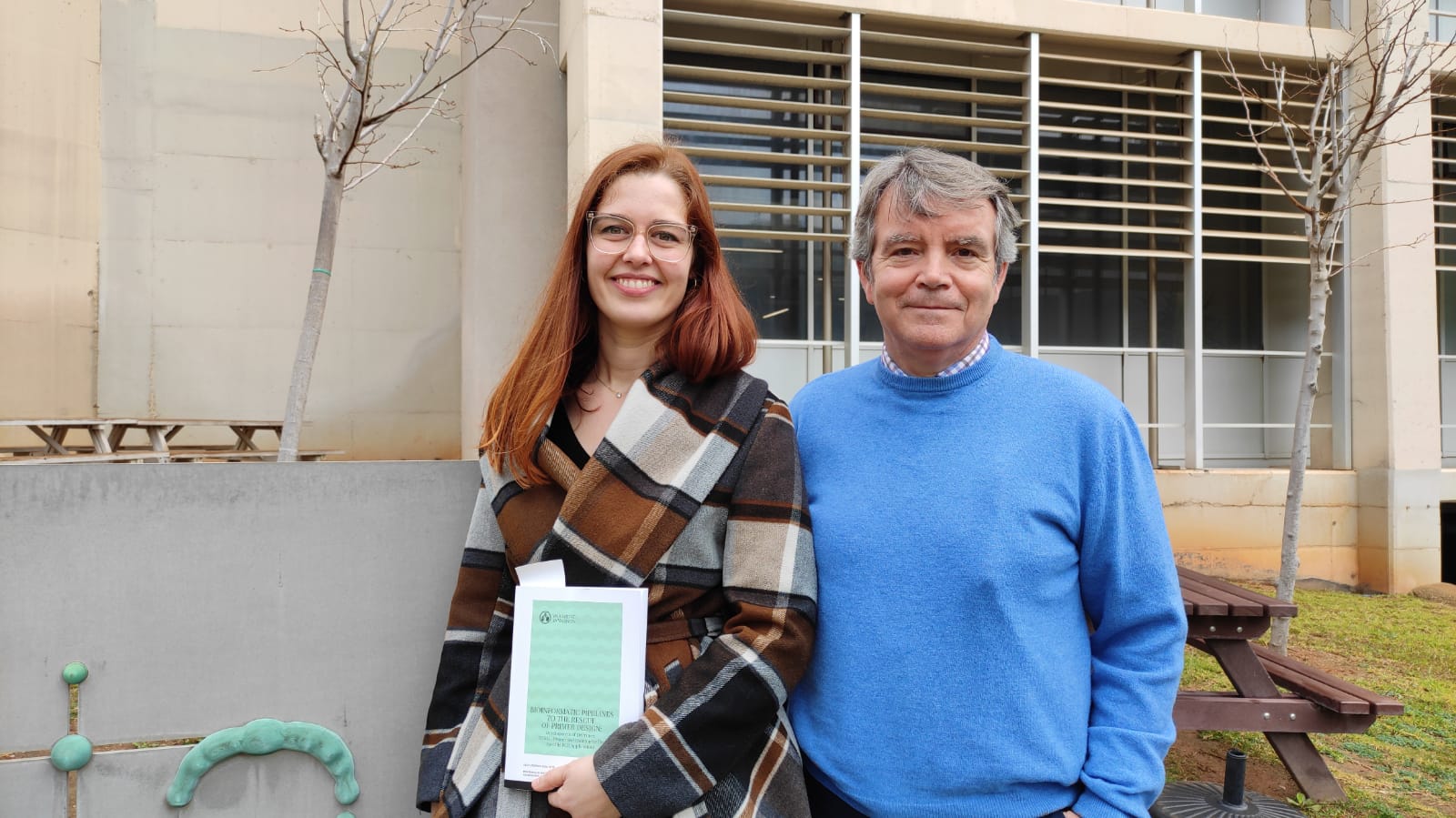Users
Social media
- More details here...
- Address
Parc Científic de la Universitat de València C/
Catedrático Agustín Escardino, 9
46980 Paterna (Valencia) Spain - Email:
iu.i2sysbio@uv.es - Phone:
(+34) 963544810
- Address
Links
Cristina Rusu defends her thesis on new primer design strategies for PCR

Investigation
Other
Cristina Rusu defends her thesis on new primer design strategies for PCR
This thesis, codirected by Vicente Arnau and Carmen Ivorra, is the result of the collaboration of I2SysBio with the company Sequencing Multiplex SL and proposes three optimised primer design strategies for PCR with the aim of satisfying the needs of different applications of this amplification technology. Part of the research results have been published in the journal BMC Genomics. The thesis was defended on 7 March 2025.
Despite the increase in new PCR-based technologies and applications, primer design remains a challenge and a bottleneck for many configurations, requiring several rounds of optimisation. Primers determine the specificity and efficiency of the amplification, as well as the reproducibility. All primers must be specific for their target and not amplify spurious sequences, such as primer dimers or regions outside the region of interest (ROI). In the present doctoral thesis, entitled ‘Bioinformatic Pipelines to the Rescue of Primer Design: Development of DrPrimer, EOSAL-Primer and ExonSurfer for Specific PCR Applications’, three different primer design processes are presented, aimed at three PCR applications with specific requirements.
Firstly, a primer design process is proposed for the creation of amplicon-based libraries for specific gene panels: DrPrimer. A key step in targeted sequencing is the enrichment of the ROI, which is usually carried out by multiplex PCR, creating an amplicon-based library. In cases where large regions are being searched, it is necessary to design mosaic amplicons. This, together with the additional requirements of multiplex PCR, makes manual design a problematic process. Primers that produce overlapping amplicons must be placed in separate reaction groups and, since fewer groups are preferable to reduce costs and pipetting, it is necessary to verify all primers in the same group for amplification of dimers or off-target products. DrPrimer designs multiple candidate primers, which are filtered according to their tendency to create dimers and their specificity. DrPrimer incorporates an innovative coverage prediction model that takes into account all the primers and their designated groups, and reports which of them will produce amplicons with below-average coverage. As a final evaluation of the method, 10 genes from a diabetes-related panel were chosen and the naive primers were compared with the panel designed with DrPrimer, demonstrating that the primers suggested by DrPrimer produce a higher percentage of target reads.
Secondly, EOSAL-Primers was developed, an application focused on the design of primers necessary for the EOSAL-CNV technique. EOSAL-CNV panels must be designed so that each amplicon has a unique length. To solve this problem, multiple candidate primers of different sizes were created for each ROI and a branching and linking algorithm was used that greatly reduces the list of candidates to only compatible combinations.
Finally, ExonSurfer is presented, a comprehensive web tool for designing primers for RT-qPCR with intercalating dyes. This primer design process focuses on gene expression experiments in which genomic DNA amplification is a contaminant. Primers are designed to span exon-exon junctions and are filtered for specificity and tendency to form dimers. The process is integrated into an easy-to-use web application, with amplicon visualisation tools. ExonSurfer has been tested in a real case, demonstrating high precision and specificity, which makes it a key tool in the analysis of gene expression.
Cristina Rusu carried out her doctoral research as a result of the collaboration between the Theory, Bioinformatics and Computing group of I2SysBio, co-directed by Vicente Arnau, professor at the University of Valencia, and the company Sequencing Multiplex SL (UV Science Park), co-directed by Carmen Ivorra, scientific director of the company. During the development of the thesis, Cristina Rusu benefited from a contract from the Industrial Doctorate programme of the State Research Agency (AEI). She also carried out a research stay in Johanna Gostner's laboratory at the Institute of Medical Biochemistry, Medical University of Innsbruck. The examining board was composed by Maria Vinaixa (Universitat Rovira i Virgili), Martie Verschuren (Avans University of Applied Sciences) and Mária Džunková (I2SysBio), who rated the thesis as outstanding.


